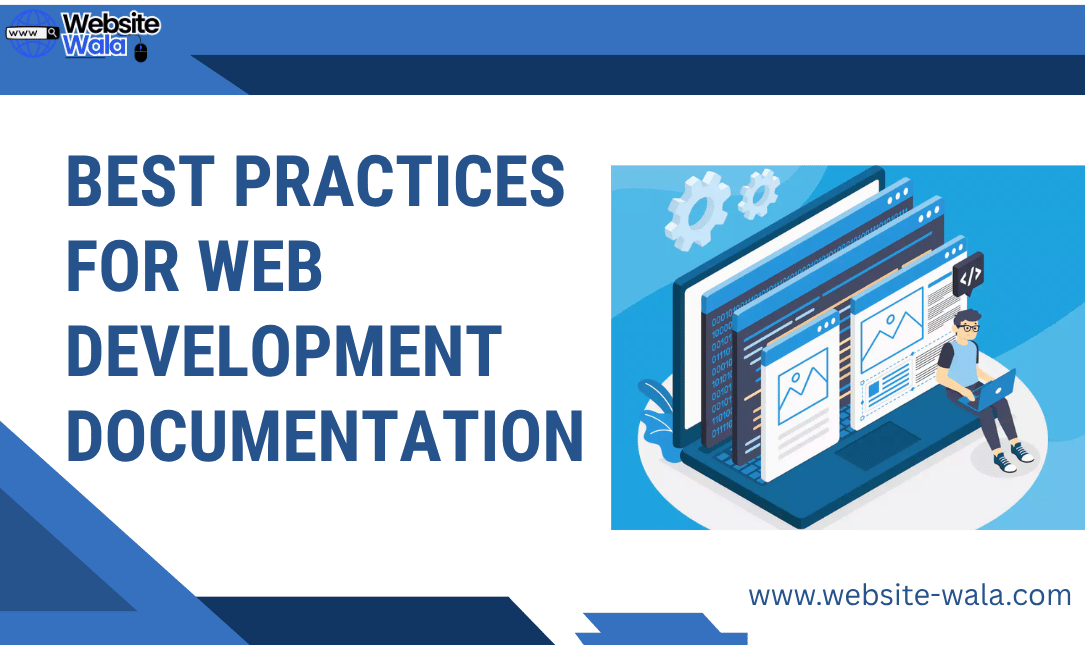
Discover the Best Practices for Web Development Documentation to improve collaboration, clarify processes, and increase project success efficiently.
Best Practices for Web Development Documentation
Web development projects can be complex, involving multiple team members, coding standards, and evolving requirements. One key factor that significantly impacts project success is effective web development documentation. Following Best Practices for Web Development Documentation ensures that your development team stays organized, communication is streamlined, and project outcomes improve.
This article delves into the essential strategies, tips, and tools for writing and maintaining high-quality web development documentation.
Why Web Development Documentation Matters
Web development documentation serves as the backbone of a development project. It provides clear instructions, coding guidelines, and process workflows that help the development team execute tasks efficiently. Well-structured documentation can:
-
Clarify processes for both new and experienced developers
-
Improve collaboration among team members
-
Increase project success by reducing errors and misunderstandings
-
Serve as a reference for project management and future maintenance
Industry experts agree that investing time in proper documentation not only streamlines development but also prevents costly mistakes and reduces onboarding time for new team members.
Key Principles of Best Practices for Web Development Documentation
Adhering to Best Practices for Web Development Documentation requires a focus on clarity, consistency, and accessibility. Below are key principles to guide your documentation efforts:
1. Define Clear Objectives
Before starting writing documentation, identify what you want to achieve. Are you documenting APIs, coding guidelines, workflows, or deployment processes? Clear objectives ensure that your documentation is purposeful and easy to follow.
2. Maintain a Consistent Documentation Structure
A consistent documentation structure helps developers quickly find information. Sections should include:
-
Project overview
-
System architecture
-
Coding standards
-
API references
-
Deployment instructions
-
Troubleshooting tips
Consistency reduces confusion and makes effective documentation easier to maintain.
3. Use the Right Documentation Tools
Choosing the right documentation tools is critical for creating professional, maintainable documents. Tools like Confluence, GitHub Wiki, and Notion are popular choices. Version control integration ensures that documentation evolves alongside the codebase, supporting documentation maintenance and updates.
4. Emphasize Clear Communication
Good documentation fosters communication within the development team. Using clear, concise language avoids ambiguity and ensures that everyone understands project expectations and coding guidelines. Include visual aids like diagrams or screenshots to illustrate complex workflows.
5. Include Examples and Use Cases
Providing practical examples and real-world use cases makes documentation more accessible. Developers can refer to these examples to implement features correctly, which aligns with best practices recommended by industry experts.
Tips for Writing Effective Web Development Documentation
Here are some practical tips to enhance your web development documentation:
-
Keep content concise and to the point
-
Use version control to track changes over time
-
Regularly review and update documents for accuracy (documentation maintenance)
-
Integrate project management updates to reflect current project status
-
Encourage feedback from the development team to improve clarity and relevance
Following these tips ensures that your documentation remains an effective resource throughout the web development process.
Strategies to Improve Documentation and Collaboration
Best Practices for Web Development Documentation should include strategies to improve collaboration across teams. Consider the following:
1. Collaborative Editing
Allow multiple team members to contribute to documentation. Tools with collaborative features facilitate real-time updates and prevent outdated or conflicting information.
2. Regular Documentation Audits
Schedule regular reviews to check for accuracy and completeness. Updating documentation in line with code changes ensures ongoing relevance and enhances project success.
3. Training and Onboarding
Integrate documentation into onboarding processes. New developers can familiarize themselves with coding guidelines and project workflows, reducing ramp-up time.
4. Link Documentation to Version Control
Integrating documentation with version control systems ensures that updates reflect code changes and historical references are available for troubleshooting.
Common Challenges and How to Overcome Them
Despite its benefits, many teams struggle with maintaining web development documentation. Common challenges include:
-
Outdated documentation due to rapid development cycles
-
Overly technical language that confuses non-developers
-
Inconsistent structure or formatting
To overcome these challenges:
-
Use documentation tools that integrate with development workflows
-
Establish best practices for documentation updates and maintenance
-
Assign ownership to a dedicated team member to ensure accountability
-
Encourage feedback loops to continually refine content
The Role of Industry Experts in Documentation
Consulting industry experts can provide invaluable insights into best practices for documentation. Experts often recommend:
-
Aligning documentation with web development process standards
-
Including strategies for collaboration and code quality
-
Documenting not only code but also project management workflows and communication protocols
Following expert advice can significantly boost team efficiency and increase project success.
Final Thoughts
Implementing Best Practices for Web Development Documentation is more than a formality—it is a strategic investment in your project’s success. Effective documentation enhances communication, clarifies processes, supports version control, and improves collaboration within your development team. By following the outlined strategies and tips, using proper documentation tools, and regularly maintaining your content, you can achieve a well-documented, streamlined web development process.
Prioritize documentation as an ongoing process, not a one-time task. This approach ensures your projects remain organized, maintainable, and ready for future growth.
By adhering to these best practices, your team can create a culture of clarity, accountability, and efficiency that ultimately increases project success.























